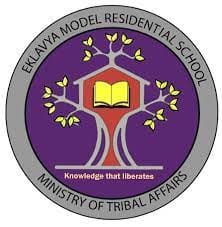Units | Topics |
Unit 1 | General characteristic of visual art/Fundamentals of visual art space, from size, shape, line, Colour, texture, tonal values, perspective, design and aesthetic, organization of visual elements in art object (composition). The uses of two and three dimensions in visual art. Tactile quality in art. Environment and art. Perceptual and conceptual aspects in art. |
Unit 2 | Traditional and Modem mediums and materials in making visual arts: Painting, sculpture, print-making, mural graphic design and multimedia art, Inventions, adaptations and development of these mediums and materials from the pre-historic period to the present day in India. |
Unit 3 | Traditional and Modem techniques, processes, and procedures, used in making painting, sculpture, printmaking, mural, graphic design, and multimedia art, such as modeling, carving, building, casting, different way of handling color pigment (like impasto, glazing, burnishing, drip), etching, relief, surface printing, fresco-Bruno, fresco-secco, etc. Printing processes including computer graphics, etc. |
Unit 4 | Relevance of the study of aesthetic and critical theories of art for the students of Visual Arts (including students of Applied Arts) and students of Art History and Art Criticism specialization. |
Unit 5 | Study of landmark phases and artists in Indian Art History from Pre-Historic times of Contemporary phase from the point of view of ideology, materials, techniques, style, themes, formal and stylistic development. |
Unit 6 | Study of various phases of Indian Art History from Pre-Historic times to 18th century (including the history of advertisement) from the point of view of general formal and stylistic features and development of ideology, materials technique, and themes. |
Unit 7 | Development of modernity in 19th and 20th century, Indian art (including applied arts) with special reference to various art movements, medium, styles, individual artist’s contributions in different regions of the country. The development of art education from the British Art Schools till the contemporary period. |
Unit 8 | The significance of the study of Tribal, Folk, and Popular arts and craft practices from all over India for the modem artists (including Applied Arts) from the point of form, technique, content, and concepts. |
Unit 9 | Knowledge of principal elements, perspective values, fundamentals of paintings, Visual principles, image, Chronology of the development of ideas. Visual reality, conceptual reality. Tradition and the gradual development of the art of combining the elements of ideas of different visual arts specialization. |
Unit 10 | Media and materials and their use, sketching and drawing. Application of materials, oil painting—AllaPrima and old master process, glazing and scumbling, priming of canvas, different types of oil, brushing, etc. Tempera and Gouache and their uses in printing in both traditional and non-traditional art, etc. |
Unit 11 | Types of paintings, open air paintings, portrait paintings, study of head and full-length figure, male and female Landscape paintings, patronized art. Paintings under different art movements still life, thematic, abstract, etc. |
Unit 12 | Principles of compositions, reflection of artists personal views, development of concept. Process of creative paintings. Expression of ideas under some aesthetical and philosophical views. Artistic expression during different social and structural changes. Art and Changes. |
Unit 13 | Application of techniques, colors and color theory and the application of color theory in art activities. Color harmony, traditional application of color and the application of color reasoning. Color preparation, texture, and technical aspect of pigment. Sources and influences of various traditions, etc. |
Unit 14 | Relevance of the study of aesthetics in Fine Arts/Visual Arts. The early Philosophical thoughts in Indian Culture. Nature and function of works of art in society. Concepts of Rasa, Sadanga, Dhvani, Alankara, etc., in traditional art. |
Unit 15 | Company school of paintings, Raja Ravi Verma, Bengal School under Rabindra Nathand his disciples (Kshitindra Nath Majumdar, Samarendra Nath Gupta, K. Venkatappa, Abdul RehmanChughtai, Ashit Kr. Haider, Nandlal, etc.) Nandlal and his disciples (Ram Kinkar, Binod Bihari, Dhirendra Krishna Dev Varma, etc.) Amrit Shergil, Academic Realism, etc. |
Unit 16 | Importance of Applied Art in Visual Communication. Understanding of all elements of an advertising design/graphic design such as typography and calligraphy (Headline, copy), photography, illustration logo and symbol. Outdoor advertising----Its importance in communication. Various kinds of media of outdoor advertising with its advantage over other media, etc. |
Unit 17 | History of advertising from early civilizations. Invention from early civilizations. Invention of moveable types. Development of printing processes: Letterpress, offset gravure, silk-screen, embossing, etc. Computer and its role in creating new visual effects. History of Indian advertising and different media. History of printing in India. Print Media vs. Electronic Media. |
Unit 18 | Study of landmark phases (Modern) and artists in World Art History (Pablo Picasso, Michel Angelo, Leonardo Da Vinci) Diego Velazquez, Vincent Van Gogh, Famous Artist of the 20th century (Europe). |





